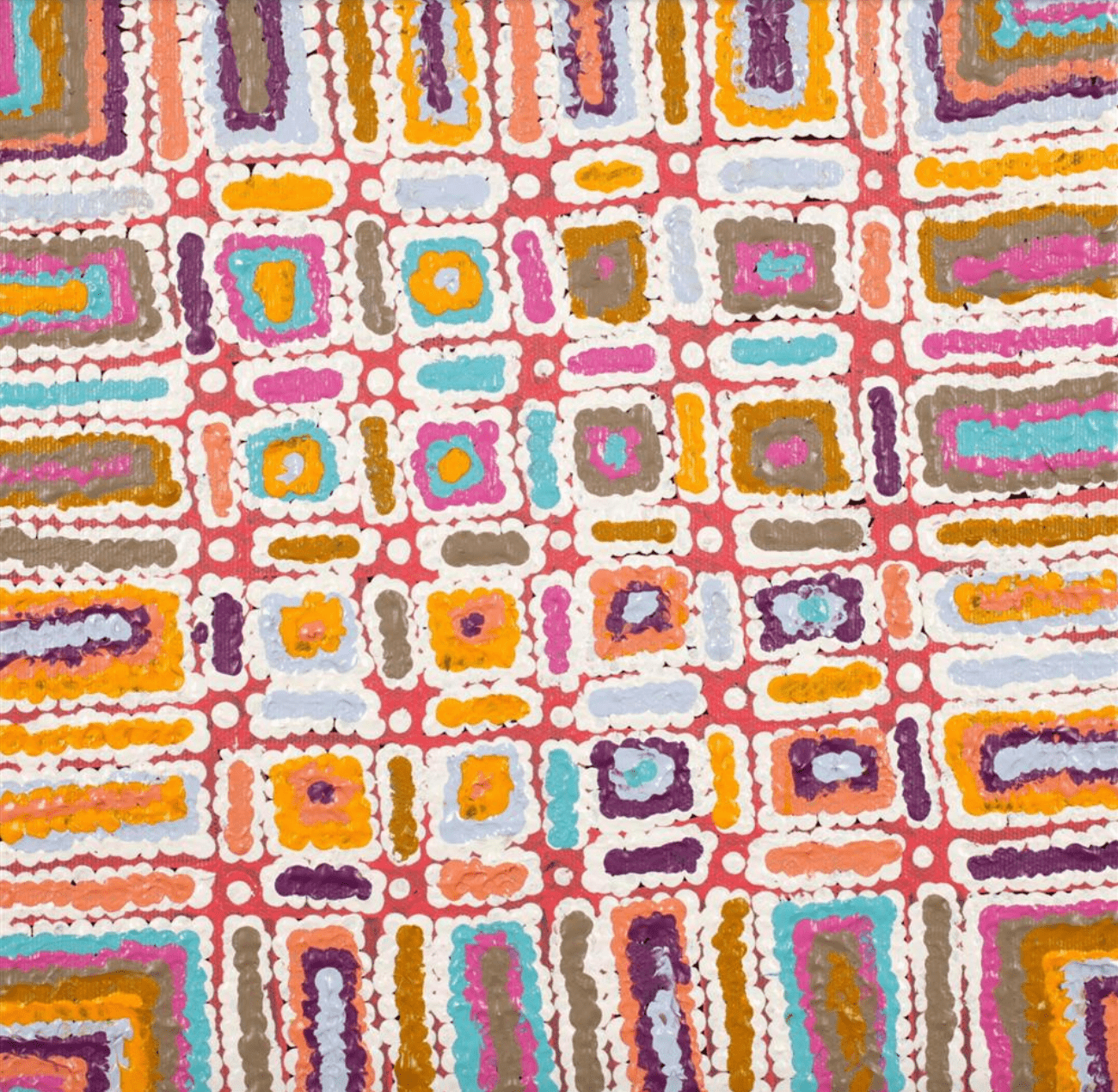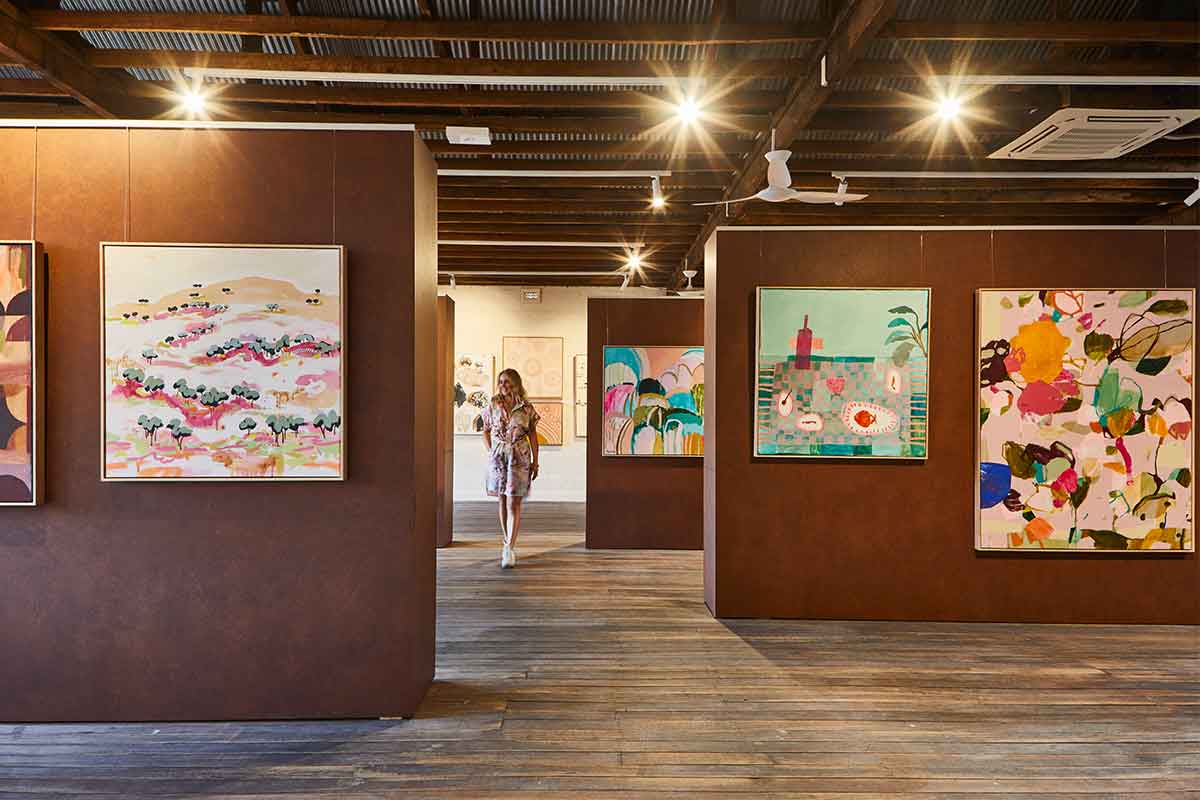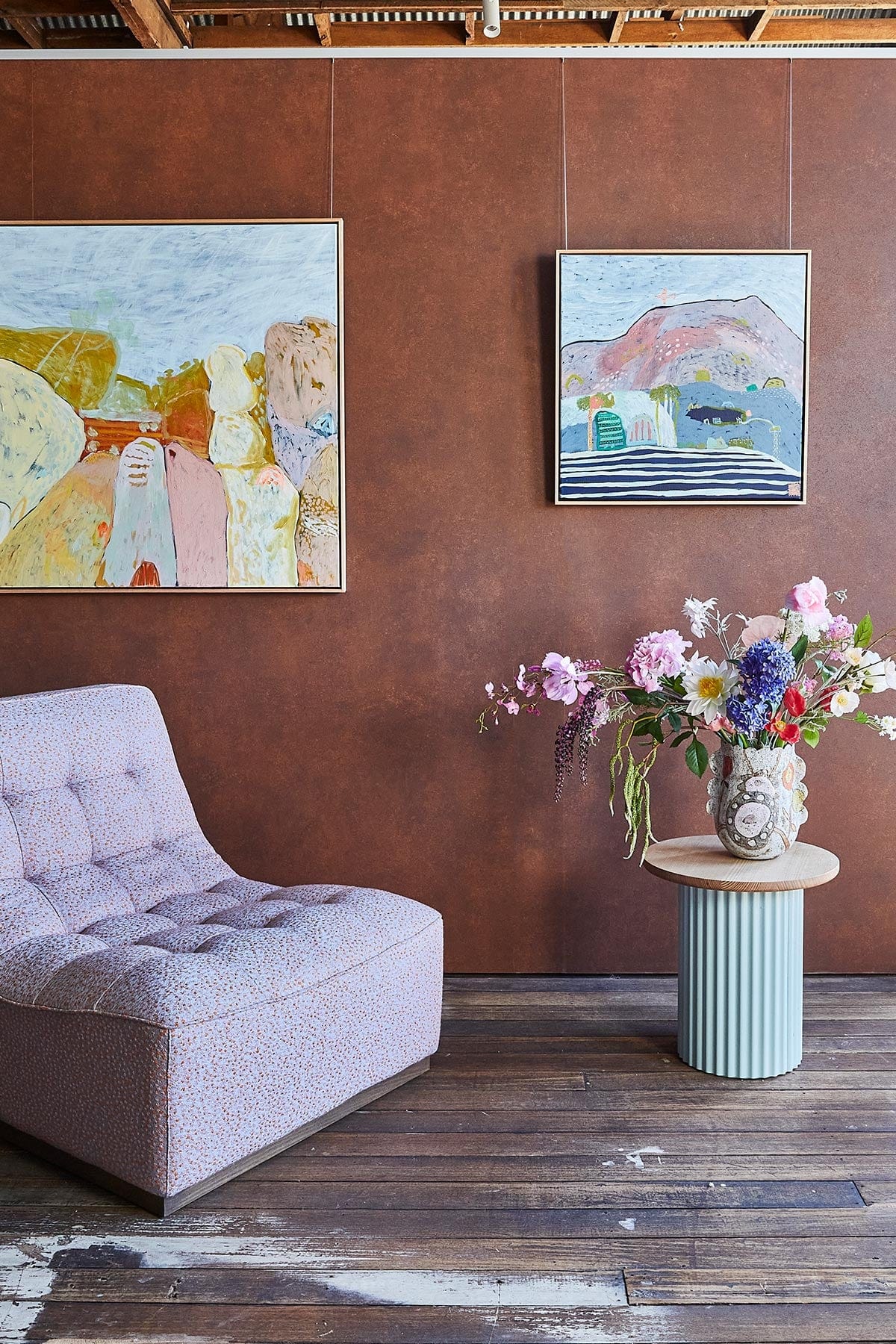
Ngapa Jukurrpa (Water Dreaming) - Puyurru (30 x 30cm) - Original Art
Details
Ngapa Jukurrpa (Water Dreaming) - Puyurru is an original artwork by artist - Lynette Nangala Singleton, a member of the Warlukurlangu Artists Aboriginal Corporation.
Additional canvas around the edge of the painting allows for stretching.
Artwork measures - 30 x 30 cm
This original artwork is unframed and shipped rolled up to your door! We have very competitive framing options on our site - see tab below to get a free online quote.
A stamped certificate of authenticity is supplied by Warlukurlangu Artists Aboriginal Corporation with this artwork.
Warlukurlangu Artists is famous for its gloriously colourful acrylic paintings and limited edition prints. The Aboriginal art centre has a national and international profile and its art has been featured in hundreds of exhibitions and publications in Australia and around the world. Warlukurlangu means ‘belonging to fire’ in the local language, Warlpiri, and is named for a fire dreaming site west of Yuendumu.
Established in 1985 Warlukurlangu Artists Aboriginal Corporation is a not-for-profit organisation that is 100% Aboriginal-owned by its artists from the remote desert communities of Yuendumu and Nyirripi in Central Australia. Proceeds from the sale of all art go directly back to the artists and their community projects. Warlukurlangu Artists is supported by funding from the Australian Government through the Indigenous Visual Arts Industry Support.
Free shipping in Australia
STORY:
The site depicted in this painting is Puyurru, west of Yuendumu. In the usually dry creek beds are ‘mulju’ (soakages), or naturally occurring wells. The 'kirda' (owners) for this site are Nangala/Nampijinpa women and Jangala/Jampijinpa men. Two Jangala men, rainmakers, sang the rain, unleashing a giant storm. The storm travelled across the country from the east to the west, initially travelling with a ‘pamapardu Jukurrpa’ (termite Dreaming) from Warntungurru to Warlura, a waterhole 8 miles east of Yuendumu. At Warlura, a gecko called Yumariyumari blew the storm on to Lapurrukurra and Wilpiri. Bolts of lightning shot out at Wirnpa (also called Mardinymardinypa) and at Kanaralji. At this point the
Dreaming track also includes the ‘kurdukurdu mangkurdu Jukurrpa’ (children of the clouds Dreaming). The water Dreaming built hills at Ngamangama using baby clouds and also stuck long pointy clouds into the ground at Jukajuka, where they can still be seen today as rock formations.
The termite Dreaming eventually continued west to Nyirripi, a community approximately 160 km west of Yuendumu. The water Dreaming then travelled from the south over Mikanji, a watercourse with soakages northwest of Yuendumu. At Mikanji, the storm was picked up by a ‘kirrkarlanji’ (brown falcon [Falco berigora]) and taken farther north. At Puyurru, the falcon dug up a giant ‘warnayarra’ (rainbow serpent). The serpent carried water with it to create another large lake, Jillyiumpa, close to an outstation in this country. The ‘kirda’ (owners) of this story are Jangala men and Nangala women. After stopping at Puyurru, the water Dreaming travelled on through other locations including Yalyarilalku, Mikilyparnta, Katalpi, Lungkardajarra, Jirawarnpa, Kamira, Yurrunjuku, and Jikaya before moving on into Gurindji country to the north.
In contemporary Warlpiri paintings, traditional iconography is used to represent the ‘Jukurrpa’ (Dreaming). Short dashes are often used to represent ‘mangkurdu’ ( cumulus & stratocumulus clouds), and longer, flowing lines represent ‘ngawarra’ (flood waters). Small circles are used to depict ‘mulju’ (soakages) and river bed.
Shipping
SHARE THIS PRODUCT
You might also like...

LIFE IS BETTER WITH COLOUR
Trusted Brand Since 2012
- Specialist curator of emerging artisans, since 2012
- Over 70 Australian and international artists
- Exclusive collections
- Shop online or visit our Showroom & Gallery
- 14 day return policy*
- 24x7 support, including humans
- FREE 3D app to see art on your walls
- 5 star rating
- 100% Greenhouse Art Guarantee

Free Art Advisory
Lost in the search? Let our free art advisory cut through the noise and lead you to your next masterpiece—one that feels like home. Click on the button below to get started.

